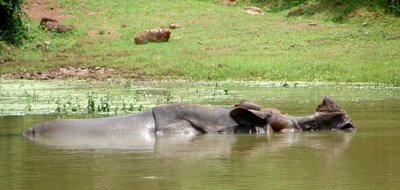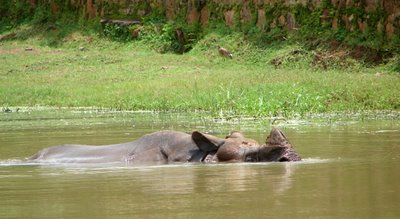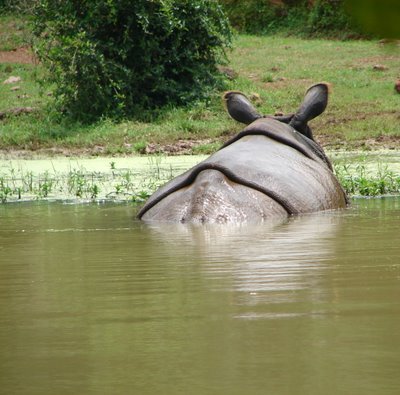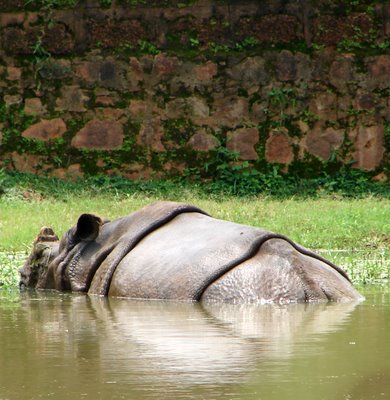 Name: Rhinoceros Unicornis
Name: Rhinoceros UnicornisDerived from Rhis (Greek) Genitive Rhinos , the nose
Keras (Greek) horn of an animal
Unus (Latin) One
Cornus (Latin) genitive Cornus, the horn of an animal
Body Length: 11.7 ft
Shoulder Height: 6 ft
Tail Length: 70cm
Weight: 1.7 - 2.2 tons
Diet: Herbivorous
Social Structure: Solitary. A mother will be accompanied by her calf for several years.
Distribution Range: Grasslands and forests in the foothills of the Himalayas.
Conservation status: Endangered

The Great Indian Rhinoceros is one of the largest rhinoceroses. Unlike other Rhinoceroses it has only one horn made of keratin, the same substance our fingernails are made of. They have excellent hearing and smell but poor eyesight. They can run at 35 miles per hour for a short time. They are excellent swimmers and they spend most of the time wallowing in water and mud to protect their skin.

The skin is slight gray in color and has many folds and bumps giving it a heavily armored appearance. The interior of the folds is slightly pink, but, due to the mud wallowing, the coloration varies with the region's soil color. During fights, their folds of skin help protect sensitive areas. There is little hair on the hide except on the edges of the ears, eyelashes and the tuft of the tail. The lone horn on the nose is usually short and dull worn down by the use.

The Great Indian Rhinoceros is active throughout the day, although the middle of the day is spent wallowing in lakes, pools, puddles, ponds, rivers and resting in the shade. This activity is important for thermoregulation and the control of flies.
Badak Api
There are quite a few legends about Rhinoceros stamping out fire. They seem to have been common in Malaysia and Burma. Such Rhinoceros had special name "Badak Api" meaning "Rahinoceros fire". The animal would come out whenever there was a fire in the forest and stamp it out. No sightings have been reported in the recent history.
Rhino stamping fire.. i remember having seen this in "Gods must be crazy"
ReplyDelete